Hydrotherapy for dogs: Does it really work?
Find out more about this powerful path to pain relief, performance, and pup rehabilitation
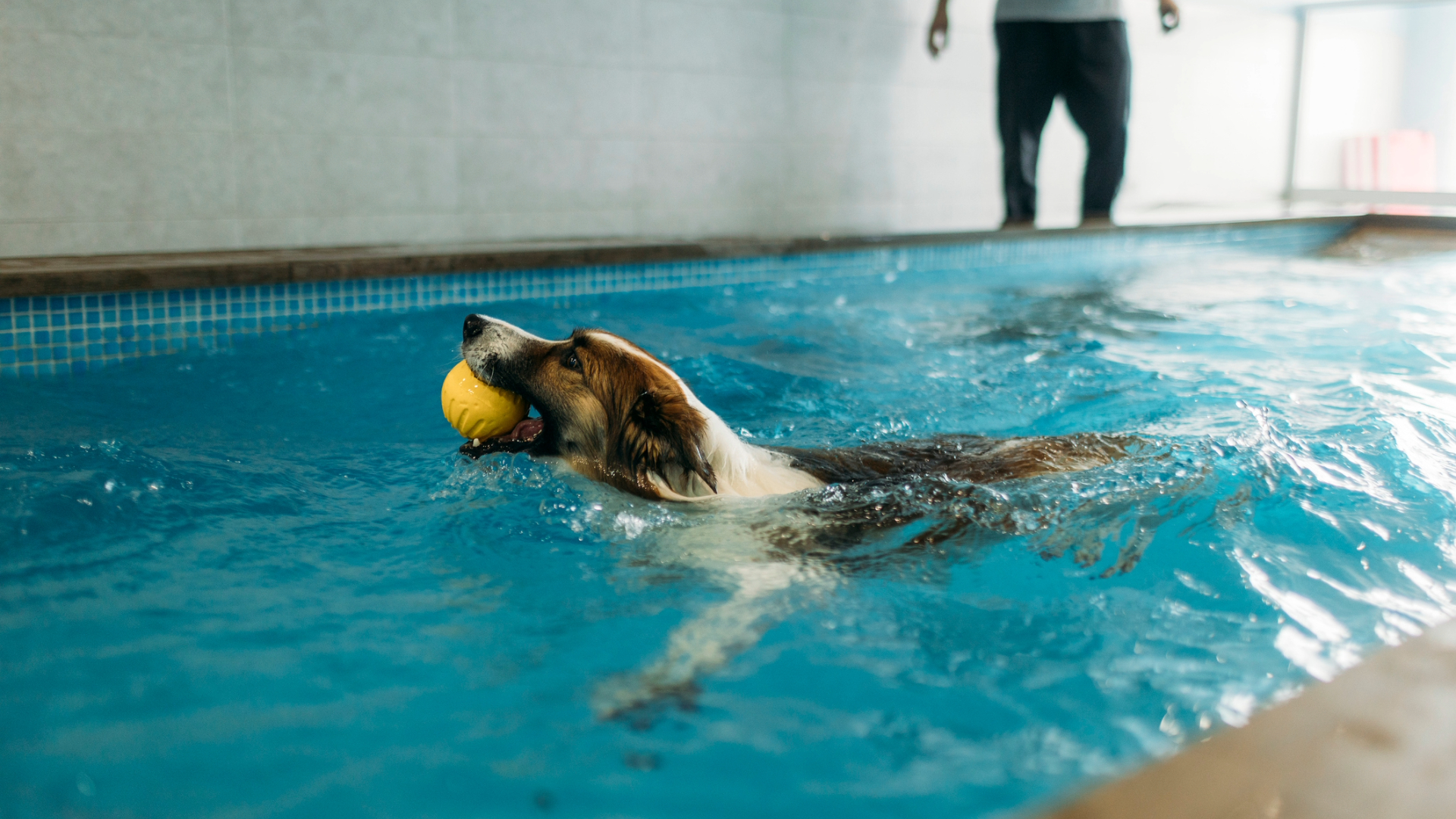
Hydrotherapy for dogs is becoming an increasingly popular form of physical rehabilitation – particularly for dogs recovering from surgery, managing arthritis, or living with long-term mobility issues. As a vet with 14 years of experience, I have seen first-hand how water-based therapy can transform a dog's quality of life.
This form of treatment takes place in specially designed pools or underwater treadmills where dogs can exercise without putting excessive strain on their joints. The buoyancy of water supports the body, allowing for gentle movement and muscle engagement with minimal pain or pressure. It’s not just for poorly pups either – some owners use hydrotherapy to keep their dogs fit and active in a safe, low-impact way.
If you're considering taking the plunge, our guide to the best swimming pools for dogs is a great place to start. But first, let’s dive into the details of hydrotherapy: what it involves, who it’s for, and whether it could help your dog.
What is hydrotherapy for dogs?
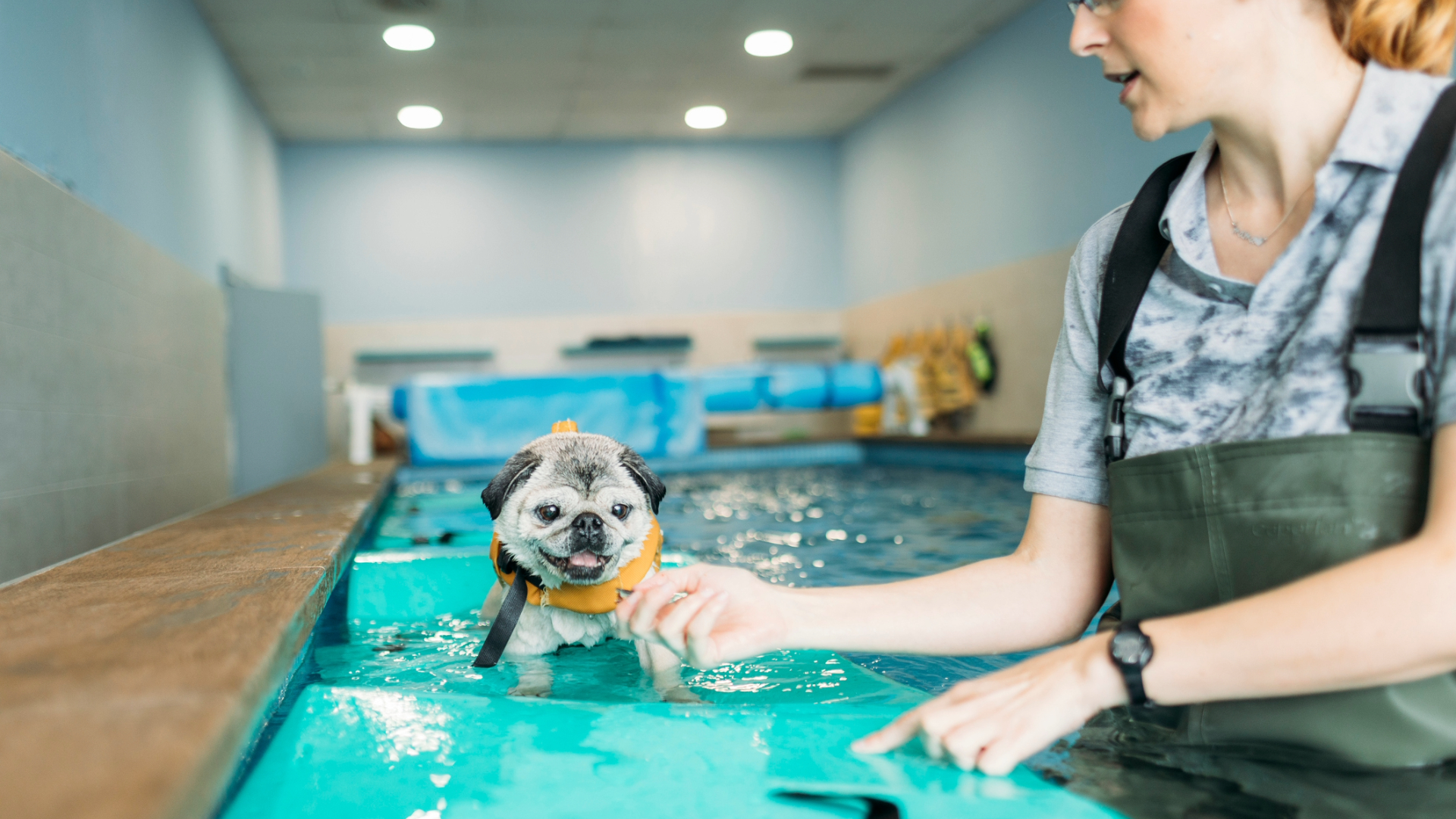
Hydrotherapy is a type of physiotherapy that uses the properties of water to support and improve your dog’s musculoskeletal health. Sessions typically take place in a heated pool or underwater treadmill, depending on the dog's individual needs and preferences. The warm water encourages circulation, relaxes muscles, and allows for pain-free movement, even in dogs with significant joint stiffness or muscle weakness.
The frequency of hydrotherapy sessions can vary based on the condition being treated. For dogs recovering from surgery or injury, I often recommend starting with one to two sessions per week. Chronic conditions like arthritis may benefit from a similar frequency in the long-term. As your dog builds strength and comfort, your therapist might gradually reduce the number of sessions or adjust the treatment plan.
Hydrotherapy is particularly useful in managing conditions such as elbow or hip dysplasia, cruciate ligament disease, degenerative myelopathy, spinal injuries, and post-operative rehabilitation. It’s also commonly used to aid weight loss and improve overall fitness in overweight or elderly dogs.
Benefits of hydrotherapy for dogs
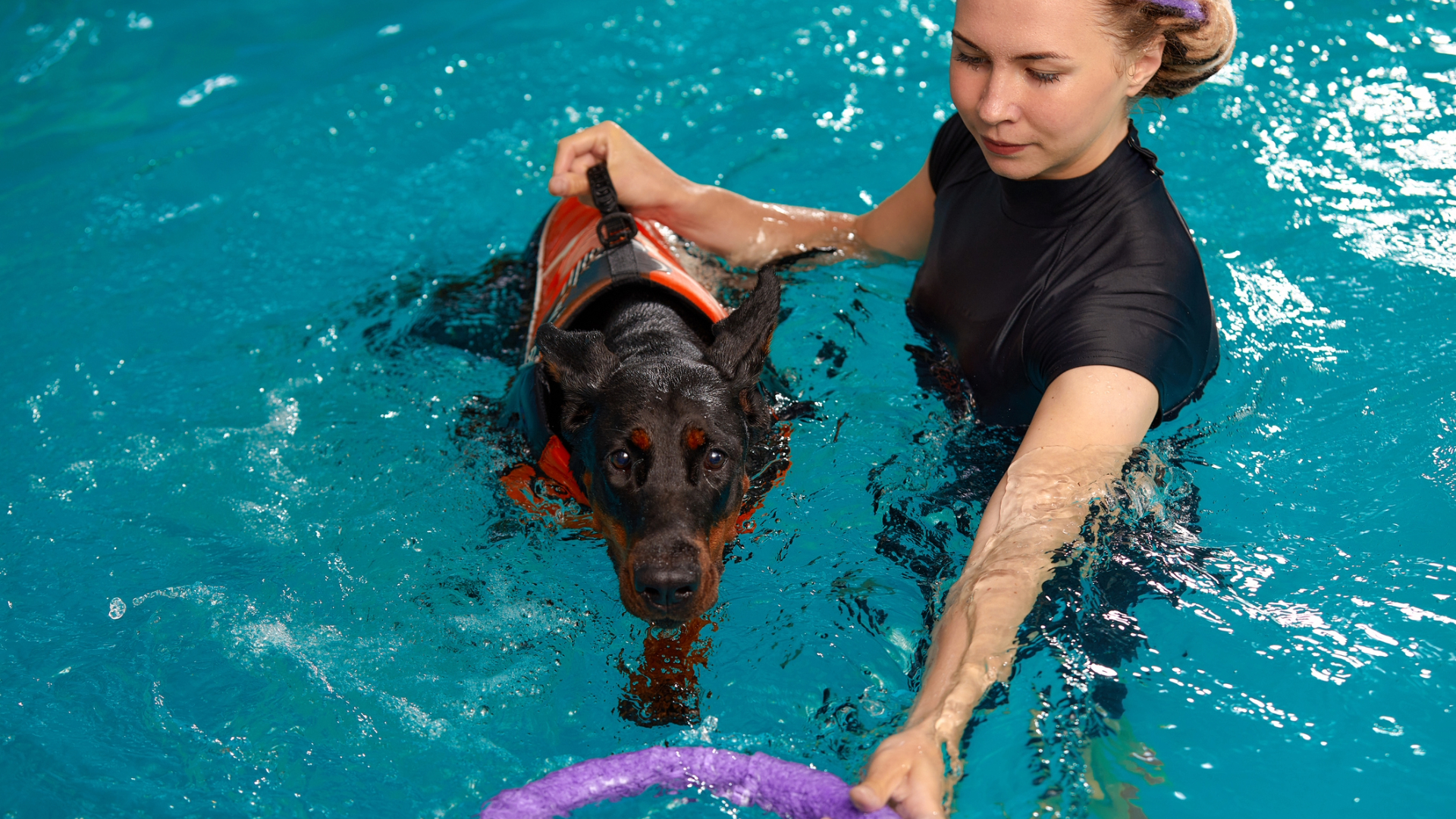
Hydrotherapy can provide a wide range of benefits for dogs, including:
Get the best advice, tips and top tech for your beloved Pets
- Reduced joint pain and inflammation
- Improved joint mobility and flexibility
- Increased muscle mass and strength
- Faster recovery from injury or surgery
- Enhanced cardiovascular fitness
- Support with weight management
- Improved mental wellbeing and confidence in anxious or nervous dogs
Hydrotherapy isn’t just physically beneficial; there are many ways dogs can benefit from swimming. It often gives dogs a new lease of life, boosting their mood and willingness to exercise.
Side effects of hydrotherapy for dogs
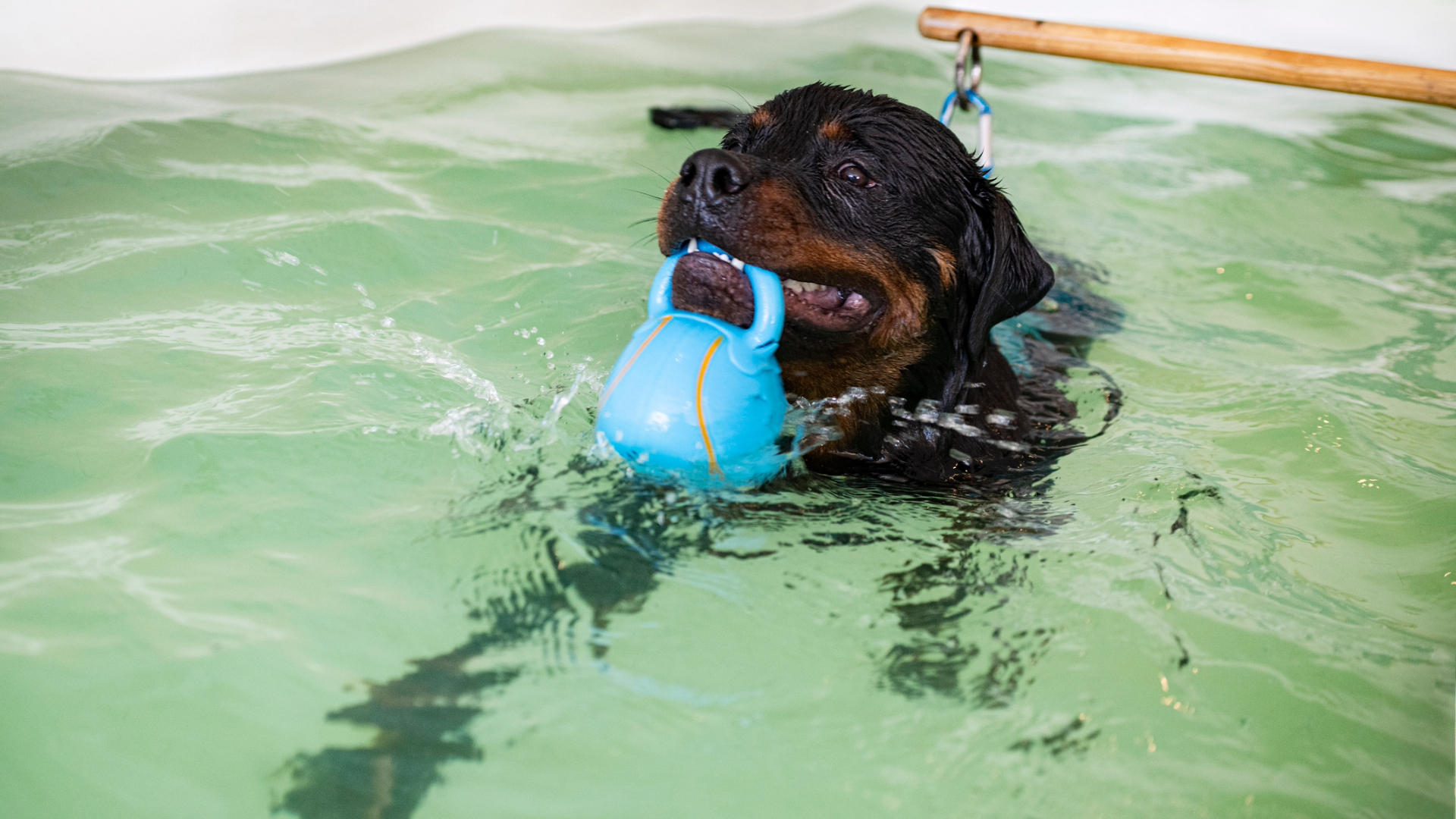
Although hydrotherapy is generally very safe when carried out by a qualified therapist, it isn’t entirely without risk. Potential side effects or concerns include:
- Muscle soreness: Particularly after early sessions, as the body adjusts to new types of movement
- Fatigue: Especially in unfit or elderly dogs, it’s important to allow for rest afterwards
- Skin infections or ear problems: If proper hygiene isn’t maintained, or water enters the ears
- Agitation or anxiety: Some dogs may initially be fearful of water, although this often improves over time
A full veterinary assessment should always be completed before starting hydrotherapy to ensure it’s suitable and safe for your individual dog.
How effective is hydrotherapy for dogs with arthritis?
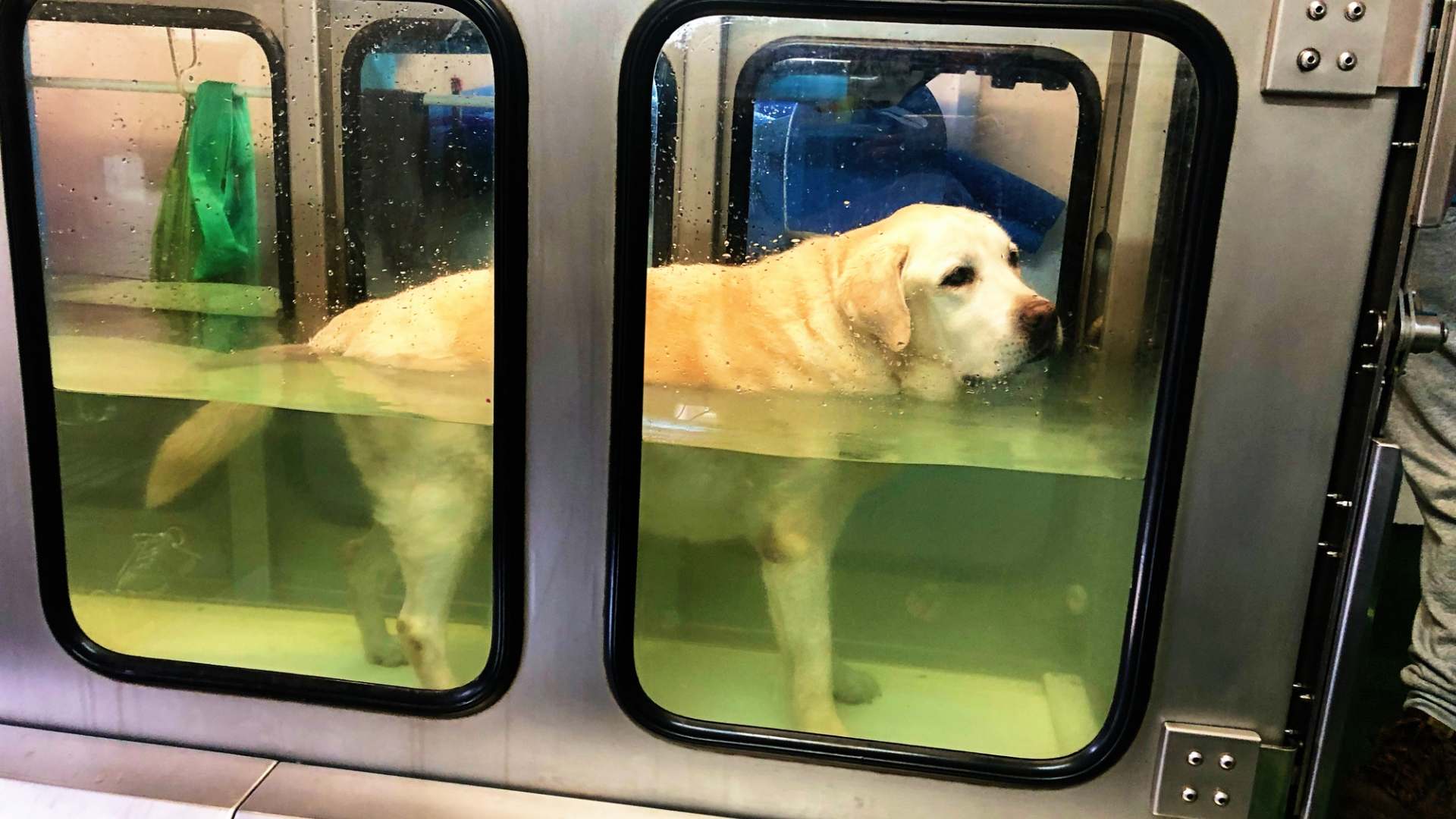
Arthritis is one of the most common conditions I treat in senior dogs, and hydrotherapy has become a really useful tool in managing it. It’s gentle yet effective, allowing arthritic dogs to stay mobile and maintain muscle tone without worsening joint pain.
In fact, many arthritic dogs struggle with regular land-based exercise, which can leave them in a frustrating cycle of stiffness and inactivity. Hydrotherapy can help to break this cycle. The buoyancy of the water supports their weight, reducing the impact on inflamed joints, while the warmth soothes discomfort and improves circulation.
When used as part of a broader management plan – which may include medication, joint supplements, and lifestyle adjustments – hydrotherapy can significantly slow the progression of arthritis and improve quality of life. I frequently recommend it for my arthritic patients, especially those who are beginning to show signs of weakness or reluctance to move.
How expensive is hydrotherapy for dogs?
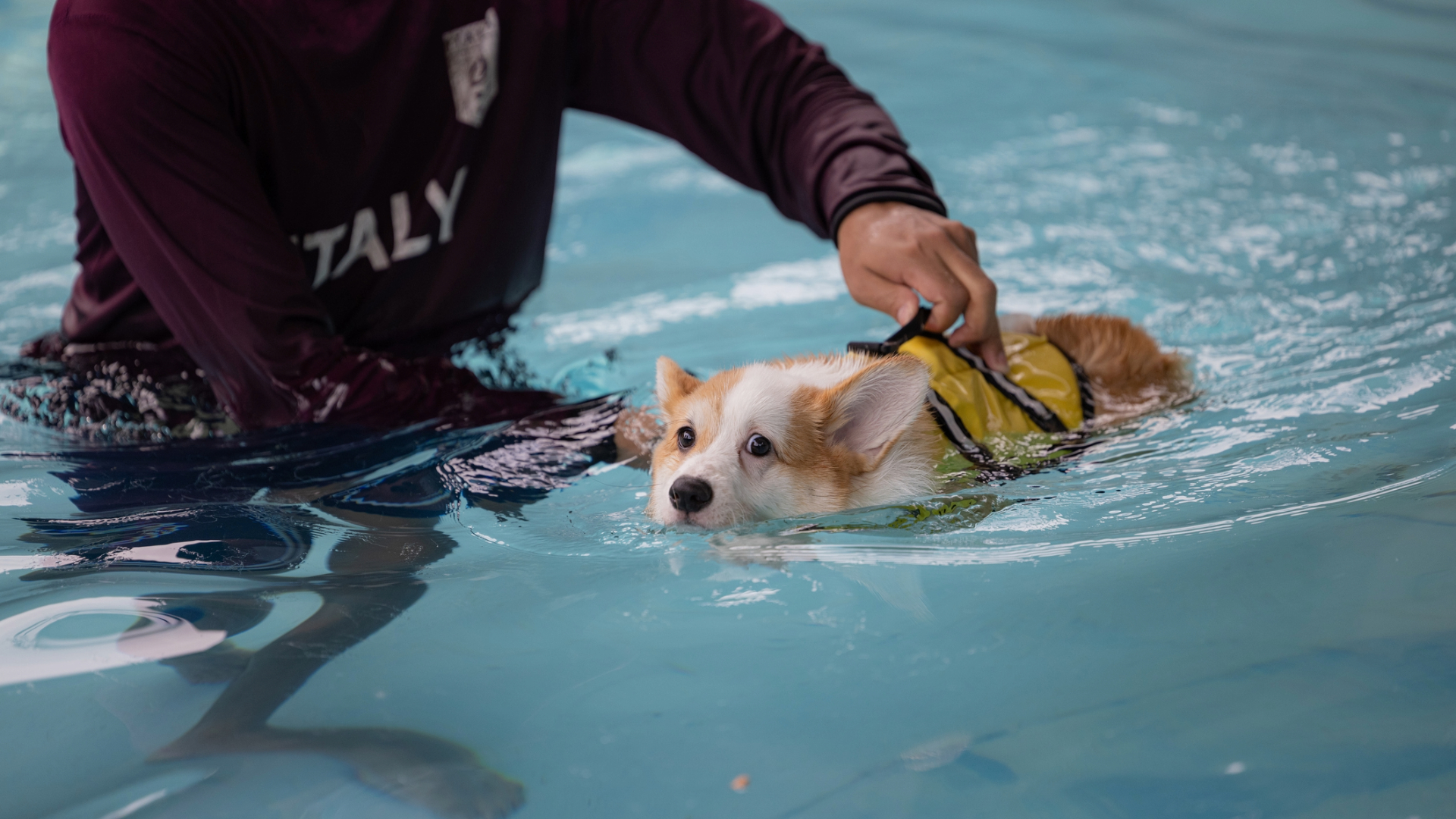
The cost of hydrotherapy can vary depending on your location, the facility, and the type of treatment (pool versus treadmill). As a rough guide:
US: You can expect to pay around $40–100 per session, with similar discounts often available for multiple bookings.
UK: Sessions typically range from £30–60 each. Some centres offer discounted packages if you book a block of sessions in advance.
Prices may be higher if your dog needs one-on-one support from a therapist, or if they require a more intensive rehabilitation program. Always check that the hydrotherapist is fully qualified and works under veterinary referral –this ensures your dog receives safe, evidence-based treatment.
It’s also worth speaking to your pet insurance provider. Some policies will cover the cost of hydrotherapy if it’s recommended by your vet as part of a treatment plan.
Hydrotherapy for dogs is a versatile and highly effective treatment that can support dogs of all ages and abilities. Whether your dog is recovering from surgery, living with arthritis, or just needs a low-impact way to exercise, hydrotherapy can offer real and lasting benefits.
As a vet, I’ve been genuinely impressed by how much this therapy can achieve. If you think your dog could benefit, speak to your vet about getting a referral; they will always be happy to help.
Read next: Dog breeds that love swimming and signs a dog is in pain

Emma Chandley is a vet with 14 years of experience and has a keen interest in surgery. After graduating from the Royal Vet College in London in 2011, she achieved a postgraduate certificate in small animal surgery from the British Small Animal Veterinary Association and Nottingham Trent University. She was then awarded advanced practitioner status in the same discipline by The Royal College of Veterinary Surgeons. She has a black Labrador and two pygmy goats at home.
Edited by Megan Milstead.
This feature was last updated in August 2025 by Emma Chandley.
Emma Chandley is a vet with 14 years of experience and has a keen interest in surgery. After graduating from the Royal Vet College in London in 2011, she achieved a postgraduate certificate in small animal surgery from the British Small Animal Veterinary Association and Nottingham Trent University. She was then awarded advanced practitioner status in the same discipline by The Royal College of Veterinary Surgeons. She has a black Labrador and two pygmy goats at home.
